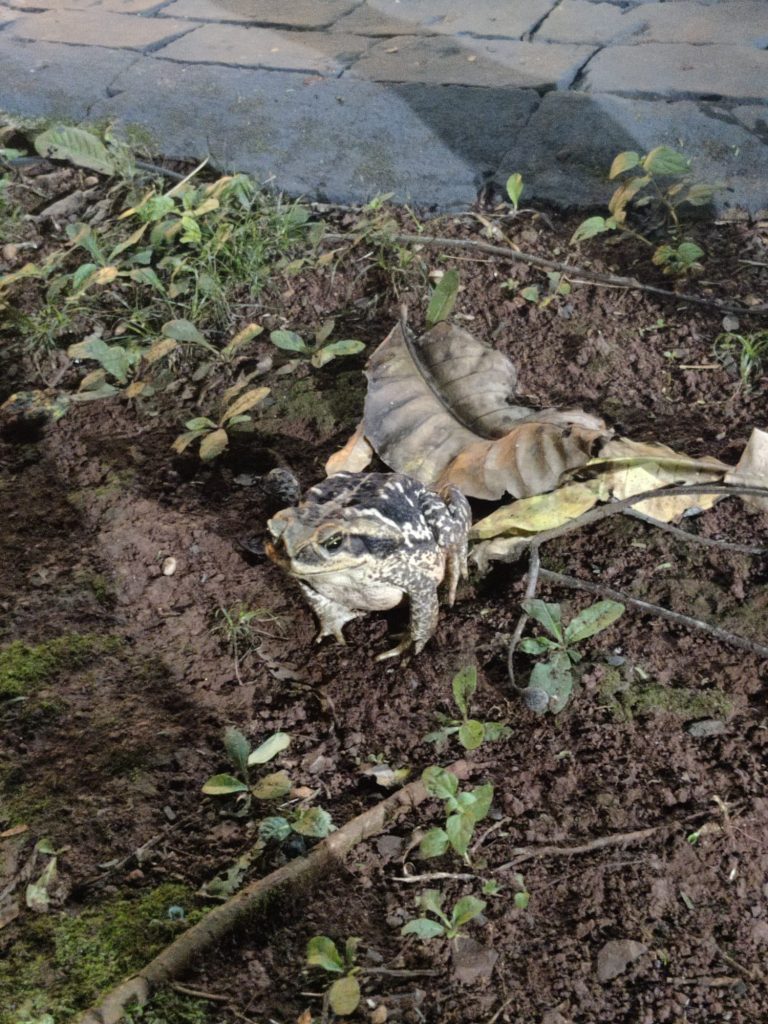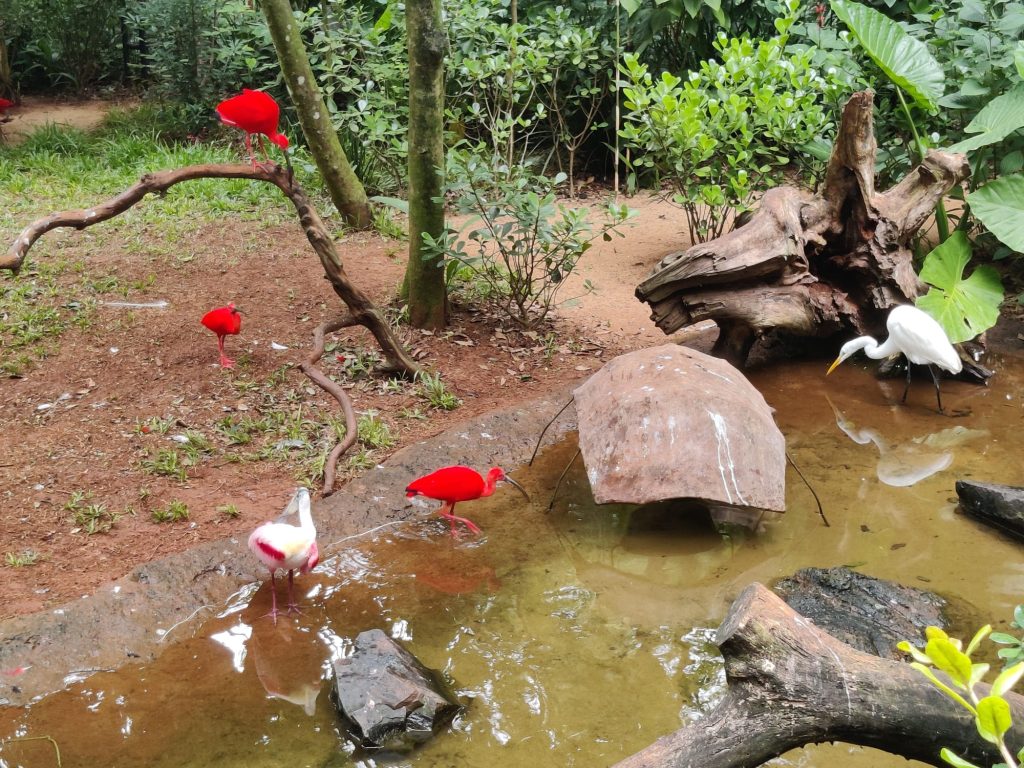Located on the border of Brazil and Argentina, Iguazu Falls are the largest waterfall system in the world. A UNESCO World Heritage listed site and natural wonder of the world, they are taller than Niagara Falls and wider than Victoria Falls, with a recorded water flow twice the combined amount of both the aforementioned.
The waterfalls of Iguazu were somewhere we all really looked forward to visiting. Our long trek north from Ushuaia in the south of Argentina to Colombia at the top of the continent did not call for a trip to Iguazu, but from Day 1 it was a phenomenon that we wanted to enjoy.
We arrived late in the evening to our campsite in Foz de Iguazu, the town that hosts the waterfalls on the Brazilian side of the border. Our first impressions were very positive as we really had the feeling that we were in the middle of a jungle! The nighttime chorus of animals and insects was wonderful, and we even met a rather large toad on our walk from the reception.
The campsite itself was located right beside the entrance to the waterfalls, which was quite convenient for our visit the next morning. After paying the park entrance fee, we boarded the 20 minute shuttle bus that brought all visitors towards the falls themselves. Once dropped off, we joined the other visitors along the main waterfall walk.
While most of Iguazu Falls are located on the Argentinian side, the view from the Brazilian side can be considered superior. We hugely enjoyed the walk that morning, amazed by the sight and sound of so much water in motion. Iguazu really is a place that can take your breath away. Even our kids were in awe at the scale of nature at work. An added bonus was the wildlife on show during the day also. We saw coatis, capuchin monkeys and capybaras, plus endless numbers of birds and butterflies.
We decided to get up close to the waterfalls with a boat ride in the afternoon. We had heard great reviews about the experience so were keen to experience for ourselves. The reality of this was quite disappointing however. Having paid what proved to be an enormous amount for a very short time, we began queuing. And we kept queuing. 90 very hot and sweaty minutes later we eventually boarded our boat, alongside about 25 other eager tourists. The boat then proceeded upriver to the first of the waterfalls, duly sailed directly under said waterfall drenching everyone on board, and then exited straight back to our departure point. The whole trip lasted less than 20 minutes and left us feeling really disappointed. Certainly not something we would do again if the opportunity arose.
Having mostly dried off on our way back to the campsite, we reflected on our first day in Iguazu. The waterfalls themselves were truly spectacular, however the the boat trip were much less so. Also, it must be said that there were a lot of people there the day we visited. Perhaps we came during high season, or at a bad hour, but at times the visit did feel uncomfortable due to the crowds.
We decided to spend the next day enjoying non-water activities. The morning began with a short walk to the Parque de los Aves (Bird Park). This aviary sanctuary is one of the largest in South America and ensures the conservation of 120 bird species of the Atlantic Forest in various extinction level concerns. The park is fantastically well run, with people truly interested in the wellbeing of these animals. Despite the incredible heat and humidity combination, we hugely enjoyed the park, even capping it off with a delicious lunch at the on-site restaurant.
The afternoon saw us board a local bus to the centre of Foz de Iguazu. This was a less successful venture, as we felt the city lacked much appeal in general and we left looking forward to a return to our jungle campsite.
Our final day in Iguazu saw us cross the border to the Argentinan town of Puerto Iguazu. From there we continued to the Argentine entrance to Iguazu Falls. Compared to on the Brazilian side, accessing the falls here required considerably more walking (unless you choose to take the rather expensive internal train system that is). We were delighted to trek around the well laid out walkways which eventually led to vistas of the waterfalls. While we enjoyed these, we felt that they were a little less spectacular than what we had seen while in Brazil. The crown jewel of Iguazu Falls in Argentina is the Garganta del Diablo or “Devil’s Throat” walkway. This engineering feet allows visitors to get up close and personal with an incredible view of the falls. However, our visit coincided with a temporary closure of the walkway, following record breaking rains and a substantial rise in water levels.
That concluded our trip to this unique part of the world, having experienced some really memorable sights and sounds. The sheer volume of moving water was a delight to observe. The setting of the waterfalls themselves is also something to be experienced, just be ready to sweat a lot! And the Parque de los Aves is something that young and old can really appreciate and enjoy. However, like many of the worlds largest tourist attractions, a visit here will likely be accompanied by that of many many other visitors. Just something to have in mind and be prepared for if you do choose to visit Mother Nature in all her force!










